Shadow of the Horns: Metal album covers have come a long way
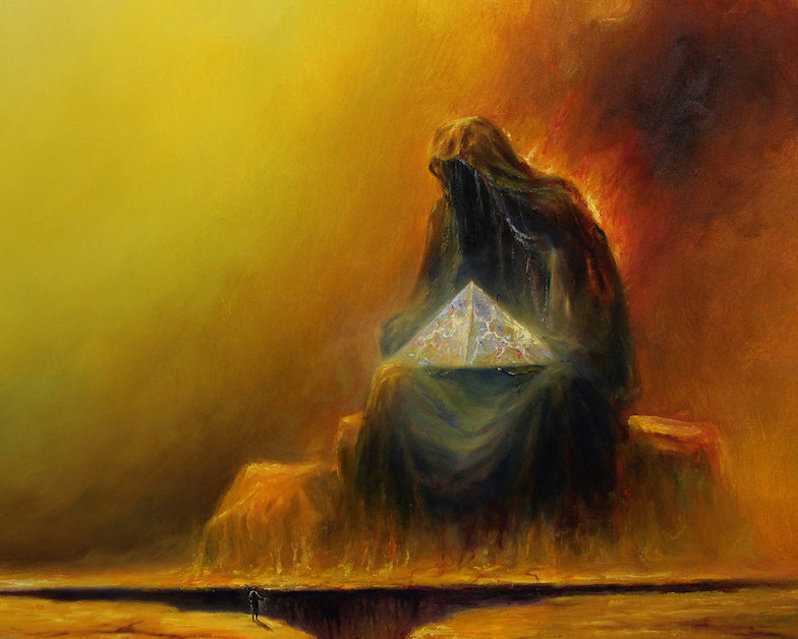
Mariusz Lewandowski is having a hell of a year. If that name doesn’t look familiar, you’ve almost certainly seen at least one, and probably more, album covers featuring his artwork this year—he was even featured in a recent Bandcamp Daily feature. And if you haven’t it probably means you don’t pay attention to underground metal, in which case I’m surprised you bothered to read this column. A brief explainer: Lewandowski is a Polish painter who has a signature style that often features spooky robed figures. You’ll see them on albums like Mizmor’s Cairn, Bell Witch’s Mirror Reaper and False’s Portent. His big spooky robe guy paintings are evocative and powerful, artfully capturing the overwhelming mood of the doom and black metal albums they adorn. And though they’re dark and melancholy, they actually lend themselves well to memes.
Lewandowski is representative of the importance of aesthetics in metal in 2019. Time was that the rules of metal album design were stricter and narrower. Some skulls, a pentagram, some blood, jagged looking band logo letters and probably a mascot—think Eddie, Snaggletooth, Vic Rattlehead and Martha Splatterhead—and you were good to go. But metal’s evolved a lot, and different styles and approaches call for entirely different looks. In fact, just last year I wrote about how album cover design in metal is far more important to the genre as a whole than is often discussed, and of late is rife with some very cool imagery, whether it’s Thou’s preference for haunted sepia photographs (or woodblock art on their self-pressed vinyl), Sam Turner’s fantasy art for Khemmis, or the apocalyptic landscapes of Inter Arma albums.
Here’s the thing, though: There have actually been a lot of really terrible metal album covers throughout the ages. It took us a long time to get here, and there were some serious hiccups along the way. And it’s not like bands with the budget to do something amazing nail it every time (looking at you Tool and Metallica). But the ’80s were more of a wild frontier for metal artisans; on the one hand, you had artists like Doug Johnson, who made three classic Judas Priest albums look like the kind of thing you absolutely had to have airbrushed on your van. And then there’s Exodus’ Bonded by Blood, which has a couple naked, ripped (for some reason) monster babies.
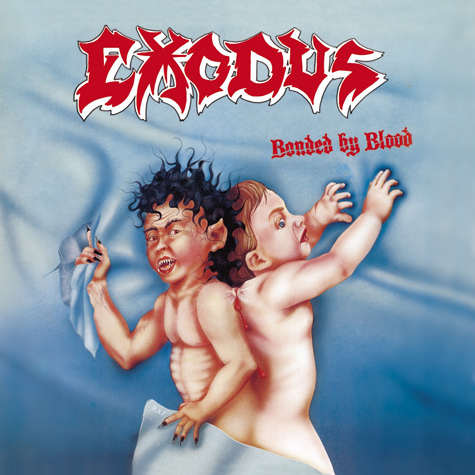
Don’t get me wrong, the campy horror element is definitely part of the appeal, it’s just, well, a bit of an eyesore. But who am I to judge. I have the album on vinyl, so clearly it was important that I see this thing full size, in living color. But they at least released an album with finished art the first time around. New Wave of British Heavy Metal icons Diamond Head issued their first album Lightning to the Nations in a plain white sleeve, which itself isn’t necessarily so bad, if poor branding in terms of getting your name out. But every subsequent reissue has only made it worse, from the image of a burning map (get it? eh?), to the goofy diamond illustration, seen below, that’s shown up on many of its reissues. (There was another one that kept the logo from the diamond version but slapped it on another absurd image of lightning striking the earth, which according to scale would be mega-lightning, but I’m not a scientist so don’t trust me on that.)
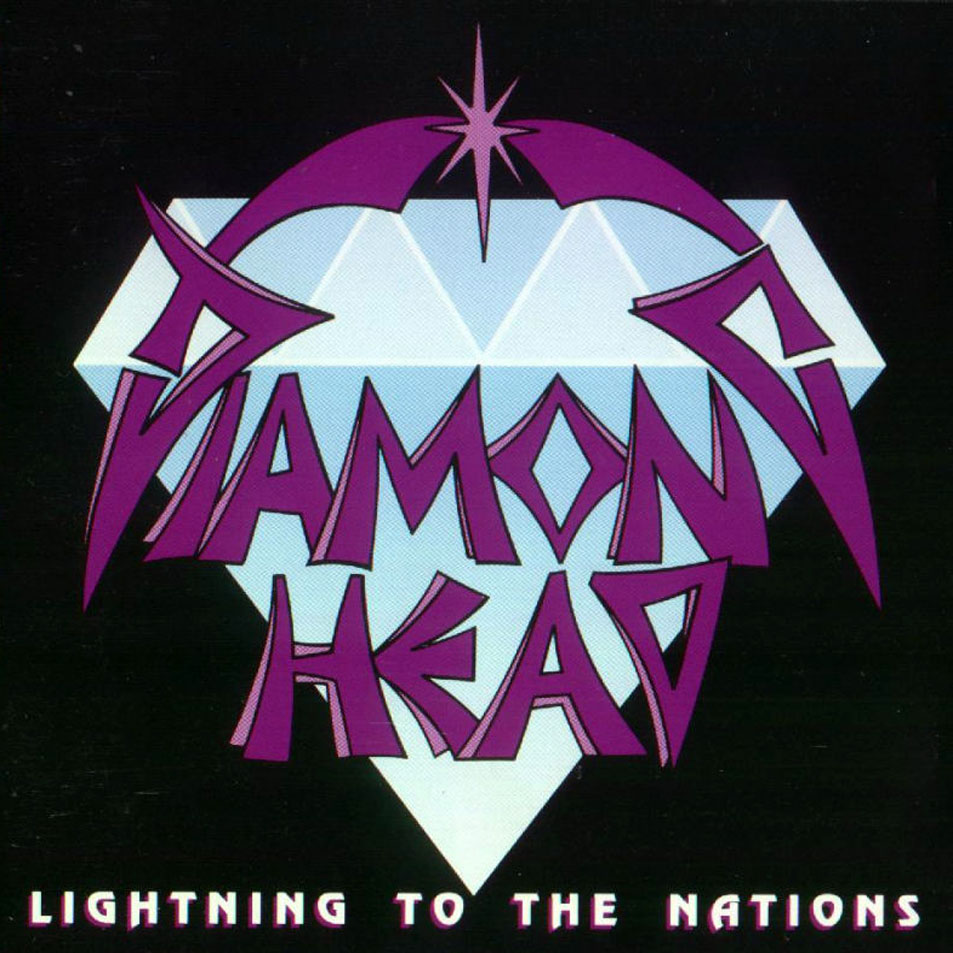
These albums are, simply, goofy looking. And that’s fine. There’s no harm in that, other than maybe the idea that a bad album cover can hurt sales, but I have no real data to go on. But past generations had a lot of biases to overcome—which current generations have done a good job in fighting but by no means have conquered—like, for instance, some pretty rampant sexism. Now ’80s-era UK doom act Witchfinder General made some great music. But it’s a little hard to abide by the gang-rapey scenario on their album Death Penalty. Yikes.
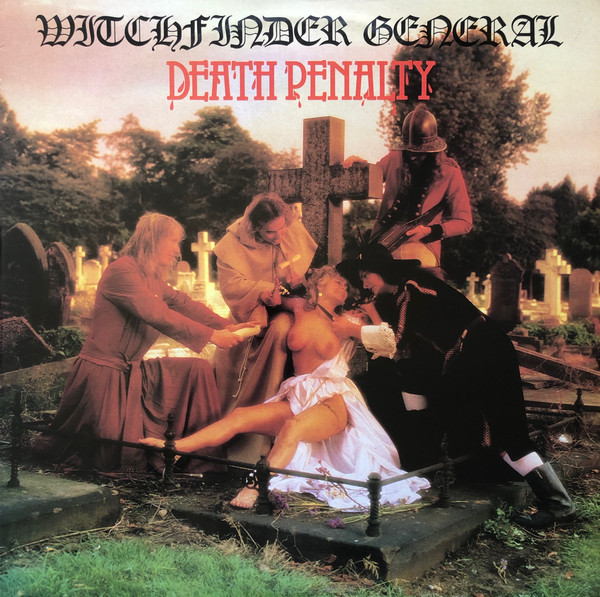
Remarkably, there were still a lot of bad album covers in metal in the ’90s! Even when the rest of the industry opted for the tasteful MTV-approved pattern of blurry photos and typewriter fonts (see: Hootie and the Blowfish, Alanis Morissette, The Presidents of the United States of America), metal was still really going for it. Take Bay Area thrash outfit Metal Church, a genuinely awesome band whose debut with its guitar-as-grave cover art is exactly what a metal LP sleeve should be, and their 1993 album Hanging in the Balance. I mean.
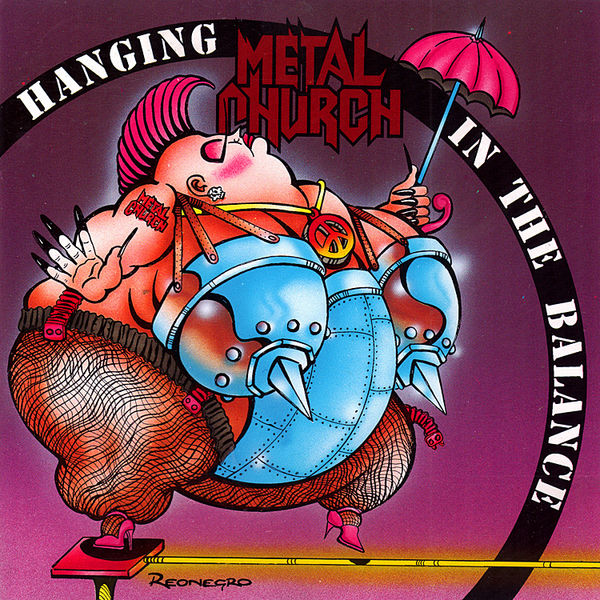
Looking back, metal has made some great strides. Then again, those with the right connections could nail down some incredible artwork from a titan like H.R. Giger (Celtic Frost, Danzig, Carcass). So perhaps it’s just a matter of budgets and creativity, but this is a good reminder of the arduous journey it’s taken to get to this renaissance of metal artwork. We shouldn’t take that for granted. And should anyone have their doubts, I leave you with the upcoming album from Blood Incantation.
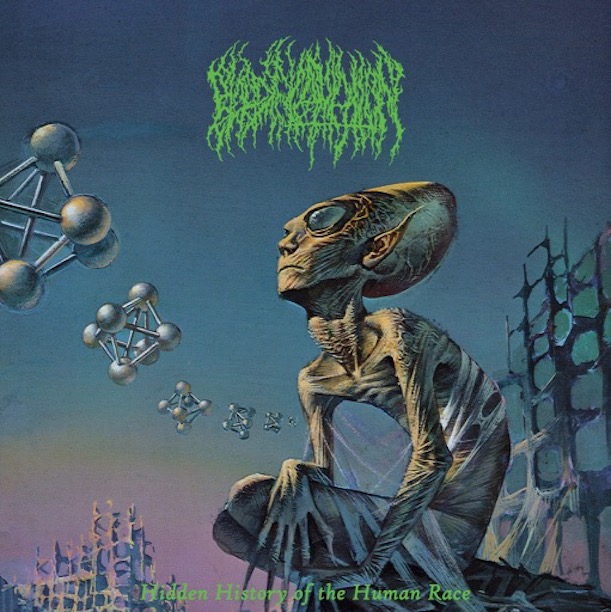
The best tracks of September 2019
Haunter – “Dispossessed Phrenic Antiquity”
Haunter’s new album Sacramental Death Qualia is so good, so revelatory and what in the name of all that is unholy did I just hear?! good that I honestly had trouble picking a track from this album to include here. (Exception, centerpiece instrumental “Abdication,” which is the least representative of the whole.) The Texas-based band have an utterly unique spin on black and death metal, if even of those remotely apply, the mathematically intricate and progressive strains of Krallice and Gorguts running through their blood. That doesn’t do their music justice though—they craft dark, labyrinthine metal that has few peers, bears little obvious influence and is best approached with the faith that it’s going to take you somewhere. The opening track is as good a place to start as any, sounding like prog-rock helmet entering the death metal realm through cosmic means. Everything about this is colossal and weird and wild. But it has the visceral punch to make its most soaringly complex moments flow seamlessly.
From Sacramental Death Qualia, out now via I, Voidhanger
Sleeping Ancient – “A Path Emerges”
Texas’ Sleeping Ancient (hey, that makes two this month from the Lone Star State!) hasn’t been hyped to death just yet, as they’re still pretty new. In fact, their debut album was just released, so most of us are still getting caught up. But so far I’m seeing a lot of descriptions of them as “atmospheric black metal.” Which is accurate—that summarizes pretty well what they do. But that’s also a pretty unhelpful phrase in the scheme of things. Literally hundreds, maybe thousands of bands, could be called “atmospheric black metal,” but how many of them actually sound anything alike? A lot, to be sure. But while my mind goes to Wolves in the Throne Room when I read it on paper, what I hear from this band is something quite different, more influenced by ’90s post-hardcore and elements of shoegaze. Which, I suppose, on paper looks like I’m talking about Deafheaven. I’m not. In fact, I dare say they sound not much like Deafheaven at all—there’s more crunch to this, more burly climaxes, fewer moments of melancholy romance. This goes straight for the gut. Sure, it’s “atmospheric,” but the kind of atmosphere that kicks your ass. So like, uh, toxic fog, I guess? Come back to me on this one…
From There Is No Truth but Death, out now via Viridian Flame
Wraith – “Devil’s Hour”
This came out last month, and somehow I missed it. And if that’s a problem, then you can take it up with the department of Who Gives A Shit, because good metal doesn’t stick to a neatly kept schedule. But anyway, I’m making up for that oversight by highlighting this Indiana band, whose super-fun, wild and destructive old-school heavy metal is some of the most fun I’ve had on a first play all year. It’s not miles apart from the Devil Master album that came out earlier this year, but with less of the death rock pageantry. Instead, this is old-fashioned American juvenile delinquent, make-your-parents-nervous, upset-John-Stossel heavy metal in the vein of Venom or early Metallica and it rips. “Fucking Devil’s Hour!”
From Absolute Power, out now
Vastum – “Reveries in Autophagia”
Am I overdoing it on the 20 Buck Spin selections in 2019? Once again, I refer you to the department of Who Gives a Shit. The label is absolutely crushing it this year, and you can take that as literally as you need to (note: no human beings have been harmed in the distribution of 20 Buck Spin’s metal, except for maybe the poor bastard who had to take those Tomb Mold preorders to the post office). But I’ve been waiting for new Vastum for four years, and it’s finally set to materialize this fall. The first track released from the Bay Area band’s upcoming album is, frankly, everything I could have asked for—eerie death-doom riffs, a pummeling rhythm, and the sudden realization that Halloween is around the corner and you need to start choosing your death metal tracks for the October playlist. “Reveries in Autophagia” is spooky and gnarly and tuff and rough, and it’s exactly the kind of death metal I need right now. Certainly, there’s going to be a lot of talk about Ancient Aliens metal in the near future, but give me that occult roar any day.
From Orificial Purge, out October 25 via 20 Buck Spin
White Ward – “Love Exchange Failure”
Is that—I think it is—a saxophone! I’m willing to beat this dead horse as often as I need to, because saxophones absolutely belong in metal, and if we haven’t learned that by 2019, we’ve clearly learned nothing. It was a good idea back in 1978 when Black Sabbath did it—even though the backlash for Never Say Die was pretty harsh (being born after the ’70s has given me an appreciation for things that public opinion turned sharply against at the time). Ukraine’s White Ward are one of the best bands right now proving this thesis, their sound an eerie, Lynch-worthy hybrid of dark jazz and black metal. To put it crudely, they’re something like Bohren and Der Club of Gore if their songs had black metal sections. Leaving it at that does White Ward a disservice, but they do mood and intensity beautifully. And it’s not just a saxophone that makes a song like “Love Exchange Failure” so seductively eerie, it’s the piano as well. To use cinematic terms, this is more psychological horror than splatter flick, and it’ll haunt your dreams.
From Love Exchange Failure, out September 20 via Debemur Morti
Piece by piece
The best metal albums of the month:
Cloud Rat’s Pollinator: One could easily make the argument that this has been as strong or even better a year for hardcore than metal (though I’m not willing to commit to that until the next album by The Armed materializes), and perhaps even a better year for heavy music that doesn’t fit comfortably into any category. And I’ll get to that soon enough. But Cloud Rat are somewhere between hardcore and metal, not quite traditional grindcore but in the ballpark enough for that to do the trick if need be. But they’re also crust, black metal at times, melodic, mangled, beautiful, brutal, and truly some of the best heavy music being made right now by a band that won’t stay in one lane, and thank the lord for that. (Artoffact)
Mizmor‘s Cairn: Yes indeed, this is one of those spooky robe guy albums. But the funny thing about Lewandowsky’s artwork is that it’s pretty much universally distributed among albums that whip ass. Maybe that’s a weird way of discussing this album, a doom/black metal epic about depression and religion that’s more introspective soul-baring than generally witchfinding, but these are strange times and we sometimes raise our lighters to albums that move slowly and plumb emotional depths. This album will mess you up, in whatever way you think it will. Easily one of the year’s best. (Gilead)
Pharmakon‘s Devour: No, this isn’t a metal album, but it’s heavy as fuck. The longer I do this, the less I care much about the strict definitions of anything—listening to and watching Pharmakon live are more visceral experiences than a lot of metal bands can offer, and that’s saying a lot, because I’ve watched quite a few metal bands. This is Margaret Chardiet’s most rhythmic album, with grinding pulses that recall early industrial acts but carry an ugliness and venom all their own. Just one more piece of evidence as to why Pharmakon is one of the most vital artists in music right now. (Sacred Bones)
Uniform & The Body‘s Everything That Dies Someday Comes Back: The Body and Uniform each occupy a different space within a fairly specific niche of contemporary industrial metal. Uniform’s take is rawer, more informed by hardcore and early thrash metal. The Body’s is harsher and grinding, featuring both a more dance-friendly pulse and a paint-stripping abrasion. Combine those two and you get something that’s gnarly but approachable, direct but intricate—a punch in the face by a fist wrapped in sandpaper. (Sacred Bones)
…And if anyone missed it, check out my essay on Converge’s You Fail Me for its 15th anniversary.
Support our Site—Subscribe to Our Patreon: Become one of our monthly patrons and help support an independent media resource while gaining access to exclusive content, shirts, playlists, mixtapes and more.
Jeff Terich is the founder and editor of Treble. He's been writing about music for 20 years and has been published at American Songwriter, Bandcamp Daily, Reverb, Spin, Stereogum, uDiscoverMusic, VinylMePlease and some others that he's forgetting right now. He's still not tired of it.

